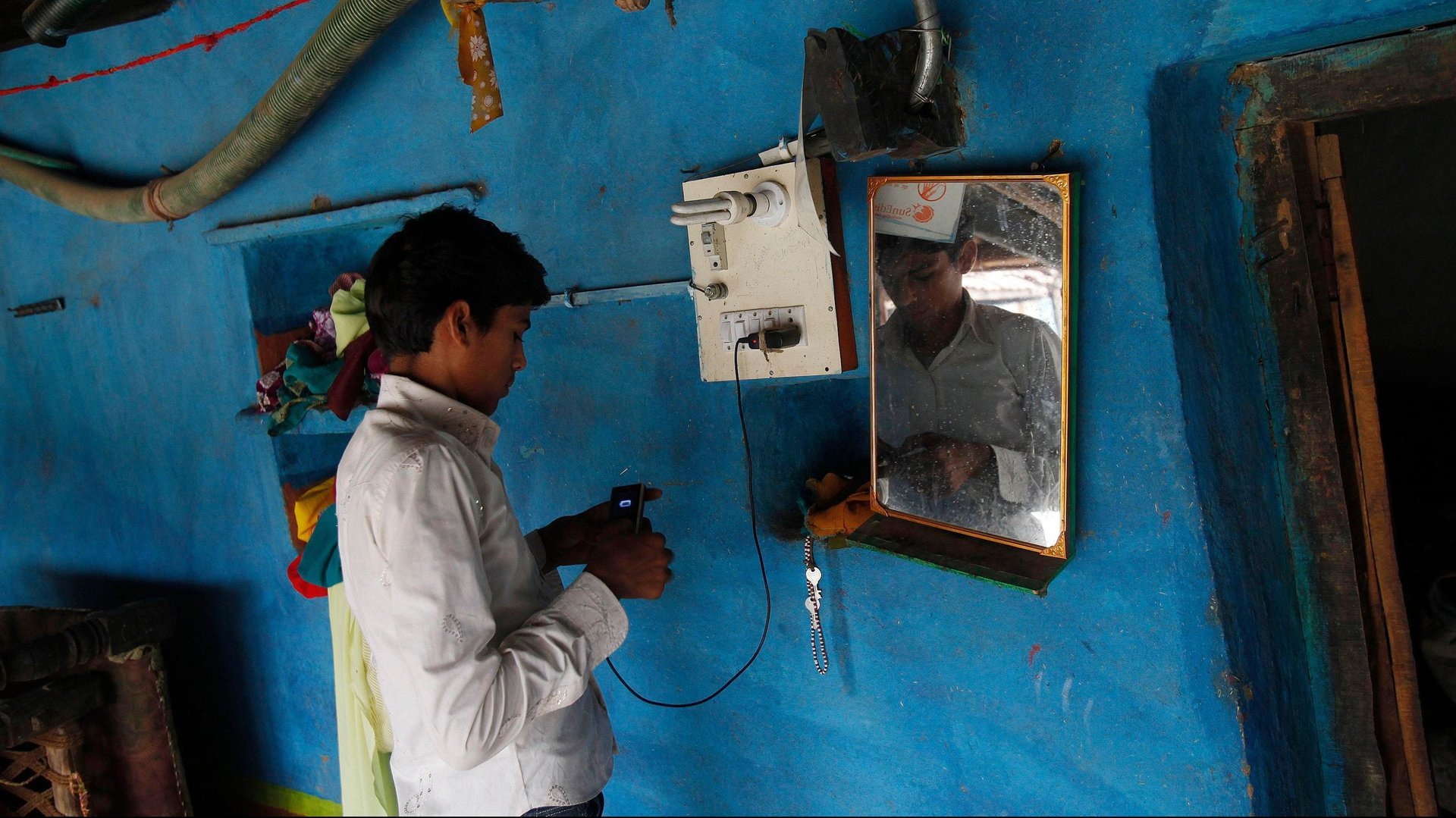Narendra Modi’s government has transformed energy use in rural India
India’s villages are racing towards universal electricity access and clean cooking. But the challenge is to keep costs low.


India’s villages are racing towards universal electricity access and clean cooking. But the challenge is to keep costs low.
A survey of over 9,000 rural households by the Council on Energy, Environment and Water (CEEW), a think tank based in New Delhi, has found a strong improvement in Indian villages’ access to energy. The survey was conducted in six of the country’s major energy-deprived states: Uttar Pradesh, Bihar, Jharkhand, Madhya Pradesh, Odisha, and West Bengal.
Electricity through the national grid is now the main lighting source for 75% of India’s rural households. In 2015, when the last round of the survey was held, most of this population was burning kerosene oil for light.
In the past three years, the number of rural households using liquefied petroleum gas (LPG)—and not traditional biomass like firewood or dung cakes—as primary cooking fuel has also more than doubled to 39%.
The increase in rural energy access shows, according to CEEW, at least a partial success of the Ujjwala and Saubhagya welfare schemes launched by prime minister Narendra Modi in 2016 and 2017, respectively.
Saubhagya aims to connect every rural household to the national power grid; Ujjwala provides low-income families with free LPG connections.
The survey report, though, highlights several bottlenecks in these missions.
Affordability
Traditional biomass such as firewood is available almost for free, and hence is the primary cooking fuel for 61% of the rural households.
The impact is lethal. Indoor pollution from such stoves leads to 4 million premature deaths every year in India “from respiratory illness, cardiovascular disease, and cancer, as well as serious injuries from scalding, burns, and poisoning,” according to the World Health Organization.
The Ujjwala scheme covers most of the cost of setting up an LPG connection for families below the poverty line, including the security fee for the cylinder and the fitting charges.
Yet, 42% of the rural households have not acquired an LPG connection, citing, ironically, the high costs involved—both in setting up the connection and the recurrent expenses incurred in refills, according to the CEEW survey.
The survey also found that 14% of the households have not been electrified due to similar reasons.
The Modi government’s Saubhagya scheme targets electricity access for each Indian household by March 2019. It provides connections free of charge to households below the poverty line, and in monthly interest-free instalments for other unelectrified households.
So “unelectrified households viewing the high upfront cost as a barrier to electrification is somewhat surprising…” the report says. “This could be the result of a lack of awareness or may reflect an implementation gap… local authorities or representatives may (illegally) charge households for installing connections.”
Quality and reliability
Most electrified households cite frequent power cuts, voltage fluctuations, and blackouts as prominent concerns.
“Blackouts and voltage fluctuations have gone down, but they are still common in these villages. If a household wastes three to four bulbs in a month due to voltage spikes, that’s significant from their income perspective,” said the study’s lead author Abhishek Jain.
The poor grid infrastructure is unlikely to be fixed anytime soon, given the state-owned power distribution companies’ financial distress. Perhaps that’s why 14% of the unelectrified households say they don’t want power connections even for free.
“Such households may not see any value in being connected to the grid and bearing recurring costs if their power supply is unreliable,” the report says.